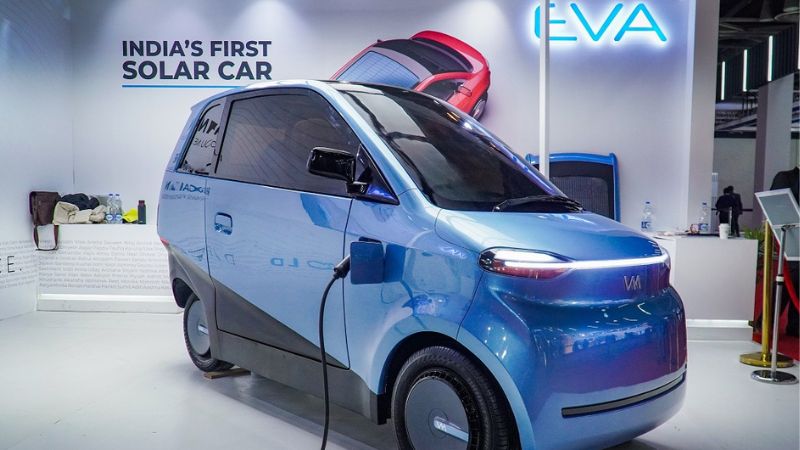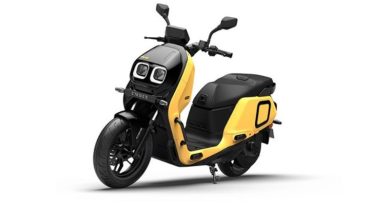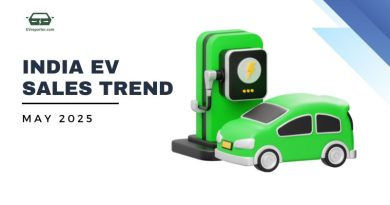Developing a solar electric micro car for easy urban mobility

Pune-based Vayve Mobility is developing a compact electric car for city driving that they aim to launch in 1.5 years at a price range of INR 5 to 6 lakhs. In this interaction, COO and Co-founder Vilas Deshpande discusses the unique dynamics associated with urban mobility and their areas of focus while developing their first product, EVA.
Please tell us about the L7 vehicle category Vayve Mobility is working on. What is the use case?
The European automotive industry created the L5 and L7 categories for the purpose of urban mobility. However, the implementation by car companies has associated small vehicles with cheap vehicles – which is not a recipe for success. We are addressing a need where people want to have a second vehicle that is purpose-designed to commute within the city without hassle and with some comfort.
The most popular microcar globally is Wuling Hongguang Mini EV. How does EVA compare with other popular cars in the segment?
Wuling Mini EV is built on the M1 category, so it still has to conform to the high-speed requirements of the M1 category. That makes the vehicle a little over-designed for what it is intended to do. We believe that L5 and L7 category cars can be made even more attractive for consumers and serve the same purpose without being overbuilt or over-engineered. That’s the distinction I would draw between Mini and what we are developing.
What is the current status of product development and expected time to market?
We showcased a production-intent prototype at the Delhi Auto Expo in January 2023. In the auto industry, there are various phases of development in the product development lifecycle. There’s a stage at which the platform is locked, and we can showcase it to the public. That’s where we were
when we took the car to the expo. Since then, we have continued the development of the vehicle. The vehicle is currently undergoing detailed engineering work on the sub-component level. We are engaging with tier-one suppliers who will eventually produce the sub-assemblies for the vehicle. We are simultaneously working on optimization of the chassis, testing and validation. I would say that right now, we are about 18 months away from production.
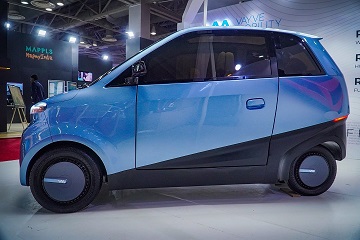
Do you have a target price for the product?
The price of the product should be proportionate to the value that it provides the consumer. It is a little early to put a price, but as a target price range, we are looking at INR 5 to 6 lakhs. But this is dependent on a number of things. Automotive prices keep creeping up every day. By the time we launch, the entire industry may be at a higher level. So, the price range is an indicator right now.
How much of the car’s energy requirements do you expect the solar roof to cover?
We are expecting 30% of a person’s annual driving requirements to come from solar energy with EVA. We have the right combination of the vehicle size, surface area for the roof and weight of the vehicle to provide a range of about 3,000 kilometres through solar power, i.e. 30% of a typical city driver’s usage of about 10,000 kilometres in a year.
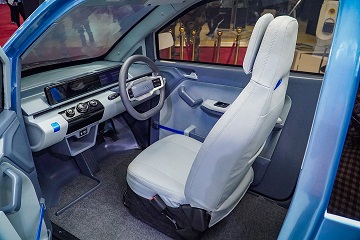
In the past, people have tried to put solar panels, which were either highly over-engineered and therefore extremely expensive, or solar panels that add only single-digit kilometres per kilowatt hour. That does not provide any material range to the vehicle. But when we say that you can get 3,000 km in a year, that’s about 10 to 15 kilometres per day and makes a substantial part of daily city commute.
The car already has both fast charging and home charging capabilities. The solar roof will keep adding to the driving range without any interventions or need for a change in user behaviour.
Have you raised any investments, and are you looking to raise money to scale up your R&D facilities and then manufacturing?
We were bootstrapped until the point we took our prototype to the Delhi Expo. Around that time, we closed an angel round. Right now, we are in discussions with multiple investors for a larger round to take us to the next level and start putting capital towards deeper R&D and tooling.
Please give us an overview of your current facilities
Currently, we have an R&D facility in Pune. Eventually, we will turn our attention towards setting up a production facility on a batch scale as an initial production plan.
In the auto industry, there is always stage-wise development, which is a lot more deliberate than people really understand or appreciate. The investment is staged in a way that it meets the objectives at a particular point in time. The first production, for example, will be a batch production of 100 vehicles. That gives us the confidence that we have worked through all of the little issues that pop up in that detailed design phase, and we have a design that is now replicable on a bigger scale. At that point, we can take the production up to the next level of about a hundred vehicles a month. That produces a sufficient number of vehicles that go into consumer hands and produce data that we can use.
This way, we are methodically trying to do a lot of the work that runs over multiple years in the case of a traditional auto OEM.
How big is the team at the moment at Vayve Mobility?
We have an in-house team of 15 people. We bring in experienced teams to work on a contract basis so we can have a larger capacity than we can have in-house at this point.
Globally, we see a lot of EV startups fail to meet their potential, Sono Motors and Lordstown Motors being the latest examples. Why are set backs and failures so frequent in the EV manufacturing business, and how do you ensure that you are on the right track?
- The process of creating a car company and manufacturing a product that you can actually put in people’s hands is a lot harder than it appears on the surface. There is a lot of engineering and manufacturing finesse that goes into creating a finished product, and that is usually the starting point of causing failures down the road for many startups.
- The maturity and depth of the founders and the management team need to be sufficient for the challenge. We are talking about an extremely complex kind of startup. Probably, the best comparison in terms of rigour and engineering discipline is equivalent to the space tech industry.
- Product market fit is extremely hard to find, and every startup struggles with it. Particularly in the electric car industry, people get drawn to the shiny example of Tesla. Tesla itself had to go through years of hard struggles before it became successful. But now that sets an unrealistic standard to aspire to build the next Tesla or an electric car with steep performance specifications. Those could be amazing vehicles with great engineering, but how many people are able to buy those cars? Plus, there would be competition from Tesla and the other big OEMs who are also trying to enter that same market. So, a product-market fit that makes sense and unlocks a very large market is a hard challenge.
- Finally, it comes down to the location for trying to build a manufacturing facility. The ability to do lean manufacturing and be extremely frugal in building a vehicle in China or India offers a huge competitive advantage versus trying to do the same thing in Europe or the USA.
And that’s where we have seen most of the large failures come from. It is a combination of these factors that we really pay a lot of attention to.
This interview was first published in EVreporter Sep 2023 magazine.
Subscribe today for free and stay on top of latest developments in EV domain.
